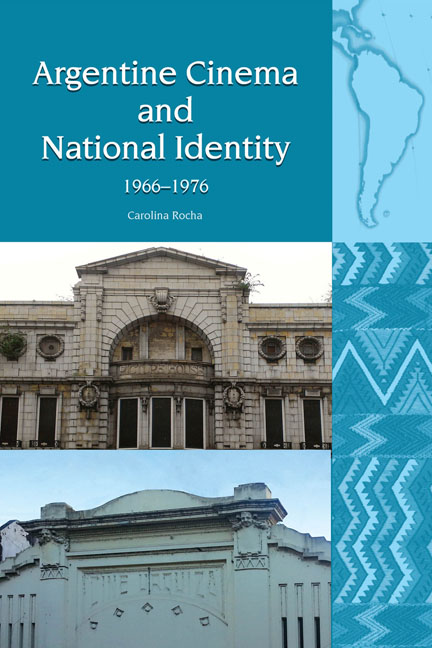Book contents
- Frontmatter
- In Memory of Paulina Piselli (1937–2017)
- Contents
- Acknowledgements
- Introduction
- Section I Argentine History and National Cinema, 1955–1976
- Section II The Cinematic Gauchesque
- Section III Representing Founding Fathers
- 10 Looking for a National Hero
- 11 Güemes, la tierra en armas
- 12 Bajo el signo de la patria
- 13 Juan Manuel de Rosas
- Conclusion
- Bibliography
- Index
10 - Looking for a National Hero
from Section III - Representing Founding Fathers
- Frontmatter
- In Memory of Paulina Piselli (1937–2017)
- Contents
- Acknowledgements
- Introduction
- Section I Argentine History and National Cinema, 1955–1976
- Section II The Cinematic Gauchesque
- Section III Representing Founding Fathers
- 10 Looking for a National Hero
- 11 Güemes, la tierra en armas
- 12 Bajo el signo de la patria
- 13 Juan Manuel de Rosas
- Conclusion
- Bibliography
- Index
Summary
After the box office success of Martín Fierro (1968), Torre Nilsson searched for a project that could be as appealing to Argentine viewers as his adaptation of the country's national poem. According to Mónica Martín, he looked for ‘alguien con quien la gente se pudiera identificar’ [someone with whom people could identify] (1993, 201). He found that hero in José de San Martín. The subject of El santo, the general was an icon of argentinidad that not only allowed viewers’ identification but also, and more crucially, referred to the birth of the nation. Furthermore, in the early 1960s, historian Enrique de Gandía (1906–2000), who co-founded the Instituto Sanmartiniano with José Pacífico Otero in 1933, explained San Martín's significance as a leader who ‘no vino a América atraído por la independencia, en la cual nadie pensaba, sino que el trajo la idea de la independencia al Nuevo Mundo. No es el hombre movido por causas ya existentes. Es el hombre que crea esas causas’ [did not come to America attracted by independence, which nobody was thinking about; instead he brought the idea of independence to the New World. He is not a man moved by existing causes. He is a man who creates these causes] (1964, 4). This characterization of San Martín's qualities seems to match Torre Nilsson's own groundbreaking talents.
His choice of San Martín was not necessarily a safe one, however. As Diana Paladino and César Maranghello quite lucidly assert, ‘En 1969, encarar la vida del General San Martín era todo un riesgo’ [In 1969, representing the life of San Martín was a veritable risk] (2010, 24). Films had to pass through two rounds of evaluation: first, the NIC had to provide a certificate of exhibition and then the Film Rating Board had to approve its content. Torre Nilsson may have identified with San Martín's battles in facing the many hurdles that his project had to overcome, but his selection of this founding father also served another purpose. Martín Kohan holds that San Martín ‘es un objeto a invocar para validar y validarse’ [is an object to invoke to validate and self-validate] (2005, 46). For Torre Nilsson, making a film about a founding father meant choosing a venture that would set him apart from his fellow Argentine filmmakers while also solidifying his dominant place within Argentine cinema.
- Type
- Chapter
- Information
- Argentine Cinema and National Identity (1966–1976) , pp. 134 - 158Publisher: Liverpool University PressPrint publication year: 2018



